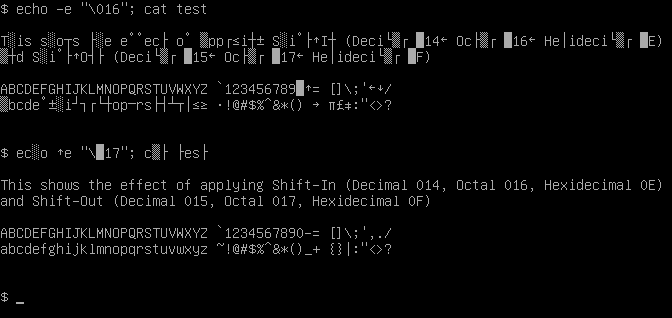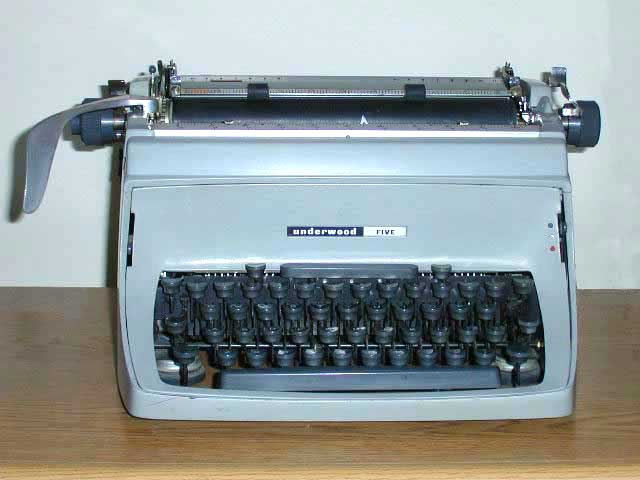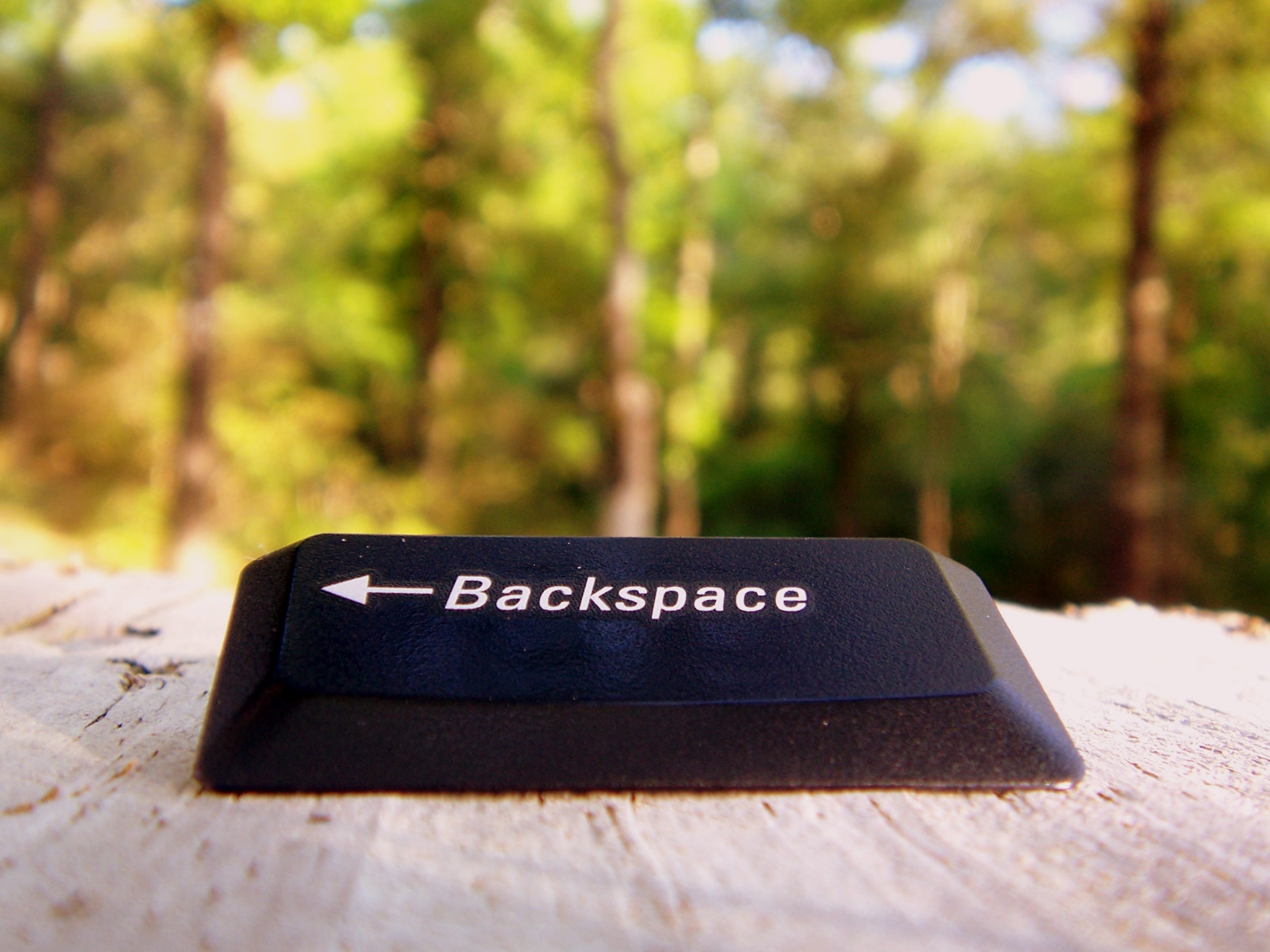|
PostScript Standard Encoding
The PostScript Standard Encoding (often spelled StandardEncoding, aliased as PostScript) is one of the character sets (or encoding vectors) used by Adobe Systems' PostScript (PS) since 1984. In 1995, IBM assigned code page 1276 (CCSID 1276) to this character set. NeXT based the character set for its NeXTSTEP and OPENSTEP operating systems on this one. Character set The following table shows the PostScript Standard Encoding. Each character is shown with a potential Unicode equivalent. Codepoints 00hex (0) to 7Fhex (127) are nearly identical to ASCII. (The characters at positions 27hex and 60hex reflect an earlier interpretation of the visual appearance of those ASCII characters than the interpretation that was formalized in Unicode; see .) The upper half of the table contains punctuation and typographic characters, currency symbols, ligatured letters, a selection of modified base letters used in European languages, and a selection of diacritic marks to be used in composing accented ... [...More Info...] [...Related Items...] OR: [Wikipedia] [Google] [Baidu] |
|
|
Adobe Inc
Adobe Inc. ( ), formerly Adobe Systems Incorporated, is an American software, computer software company based in San Jose, California. It offers a wide range of programs from web design tools, photo manipulation and vector creation, through to video/audio editing, mobile app development, print layout and animation software. It has historically specialized in software for the creation and publication of a wide range of content, including graphics, photography, illustration, animation, multimedia/video, motion pictures, and print. Its flagship products include Adobe Photoshop image editing software; Adobe Illustrator vector-based illustration software; Adobe Acrobat Reader and the Portable Document Format (PDF); and a host of tools primarily for audio-visual content creation, editing and publishing. Adobe offered a bundled solution of its products named Adobe Creative Suite, which evolved into a subscription-based offering named Adobe Creative Cloud. The company also expanded into ... [...More Info...] [...Related Items...] OR: [Wikipedia] [Google] [Baidu] |
|
|
Start Of Heading
The C0 and C1 control code or control character sets define control codes for use in text by computer systems that use ASCII and derivatives of ASCII. The codes represent additional information about the text, such as the position of a cursor, an instruction to start a new line, or a message that the text has been received. C0 codes are the range 00 HEX–1FHEX and the default C0 set was originally defined in ISO 646 (ASCII). C1 codes are the range 80HEX–9FHEX and the default C1 set was originally defined in ECMA-48 (harmonized later with ISO 6429). The ISO/IEC 2022 system of specifying control and graphic characters allows other C0 and C1 sets to be available for specialized applications, but they are rarely used. C0 controls ASCII defines 32 control characters, plus the DEL character. This large number of codes was desirable at the time, as multi-byte controls would require implementation of a state machine in the terminal, which was very difficult with contemporary electro ... [...More Info...] [...Related Items...] OR: [Wikipedia] [Google] [Baidu] |
|
 |
Shift Out
Shift Out (SO) and Shift In (SI) are ASCII control characters 14 and 15, respectively (0x0E and 0x0F). These are sometimes also called "Control-N" and "Control-O". The original purpose of these characters was to provide a way to shift a coloured ribbon, split longitudinally usually with red and black, up and down to the other colour in an electro-mechanical typewriter or teleprinter, such as the Teletype Model 38, to automate the same function of manual typewriters. Black was the conventional ambient default colour and so was shifted "in" or "out" with the other colour on the ribbon. Later advancements in technology instigated use of this function for switching to a different font or character set and back. This was used, for instance, in the Russian character set known as KOI7-switched, where SO starts printing Russian letters, and SI starts printing Latin letters again. Similarly, they are used for switching between Katakana and Roman letters in the 7-bit version of the Jap ... [...More Info...] [...Related Items...] OR: [Wikipedia] [Google] [Baidu] |
 |
Carriage Return
A carriage return, sometimes known as a cartridge return and often shortened to CR, or return, is a control character or mechanism used to reset a device's position to the beginning of a line of text. It is closely associated with the line feed and newline concepts, although it can be considered separately in its own right. Typewriters Originally, the term "carriage return" referred to a mechanism or lever on a typewriter. For machines where the type element was fixed and the paper held in a moving ''carriage'', this lever was on the left attached to the moving carriage, and operated after typing a line of text to cause the carriage to return to the far right so the type element would be aligned to the left side of the paper. The lever would also usually ''feed'' the paper to advance to the next line. Many electric typewriters such as IBM Electric or Underwood Electric made carriage return to be another key on the keyboard instead of a lever. The key was usually labeled "car ... [...More Info...] [...Related Items...] OR: [Wikipedia] [Google] [Baidu] |
|
Form Feed
A page break is a marker in an electronic document that tells the document interpreter the content which follows is part of a new page. A page break causes a form feed to be sent to the printer during spooling of the document to the printer. It is one of the elements that contributes to pagination. Form feed Form feed is a page-breaking ASCII control character. It directs the printer to eject the current page and to continue printing at the top of another. It will often also cause a carriage return. The form feed character code is defined as 12 (0xC in hexadecimal), and may be represented as or . In a related use, can be pressed to clear the screen in Unix shells such as bash, or redraw the screen in TUI programs like vi/emacs. In the C programming language (and other languages derived from C), the form feed character is represented as '\f'. Unicode also provides the character as a printable symbol for a form feed (not as the form feed itself). The form feed character is con ... [...More Info...] [...Related Items...] OR: [Wikipedia] [Google] [Baidu] |
|
 |
Vertical Tabulation
The tab key (abbreviation of tabulator key or tabular key) on a keyboard is used to advance the cursor to the next tab stop. History The word ''tab'' derives from the word ''tabulate'', which means "to arrange data in a tabular, or table, form". When a person wanted to type a table (of numbers or text) on a typewriter, there was a lot of time-consuming and repetitive use of the space bar and backspace key. To simplify this, a horizontal bar was placed in the mechanism called the tabulator rack. Pressing the tab key would advance the carriage to the next tabulator stop. The original tabulator stops were adjustable clips that could be arranged by the user on the tabulator rack. Fredric Hillard filed a patent application for such a mechanism in 1900. The tab mechanism came into its own as a rapid and consistent way of uniformly indenting the first line of each paragraph. Often a first tab stop at 5 or 6 characters was used for this, far larger than the indentation used whe ... [...More Info...] [...Related Items...] OR: [Wikipedia] [Google] [Baidu] |
 |
Line Feed
A newline (frequently called line ending, end of line (EOL), next line (NEL) or line break) is a control character or sequence of control characters in character encoding specifications such as ASCII, EBCDIC, Unicode, etc. This character, or a sequence of characters, is used to signify the end of a line (text file), line of text and the start of a new one. History In the mid-1800s, long before the advent of teleprinters and teletype machines, Morse code operators or telegraphists invented and used Prosigns for Morse code, Morse code prosigns to encode white space text formatting in formal written text messages. In particular, the International Morse code, Morse prosign (mnemonic break text), represented by the concatenation of literal textual Morse codes "B" and "T" characters, sent without the normal inter-character spacing, is used in Morse code to encode and indicate a ''new line'' or ''new section'' in a formal text message. Later, in the age of modern teleprinters, st ... [...More Info...] [...Related Items...] OR: [Wikipedia] [Google] [Baidu] |
|
Horizontal Tabulation
The tab key (abbreviation of tabulator key or tabular key) on a keyboard is used to advance the cursor to the next tab stop. History The word ''tab'' derives from the word ''tabulate'', which means "to arrange data in a tabular, or table, form". When a person wanted to type a table (of numbers or text) on a typewriter, there was a lot of time-consuming and repetitive use of the space bar and backspace key. To simplify this, a horizontal bar was placed in the mechanism called the tabulator rack. Pressing the tab key would advance the carriage to the next tabulator stop. The original tabulator stops were adjustable clips that could be arranged by the user on the tabulator rack. Fredric Hillard filed a patent application for such a mechanism in 1900. The tab mechanism came into its own as a rapid and consistent way of uniformly indenting the first line of each paragraph. Often a first tab stop at 5 or 6 characters was used for this, far larger than the indentation used when ... [...More Info...] [...Related Items...] OR: [Wikipedia] [Google] [Baidu] |
|
 |
Backspace
Backspace (, ⌫) is the keyboard key that in typewriters originally pushed the carriage one position backwards, and in modern computer systems typically moves the display cursor one position backwards,The meaning of "backwards" depends on the direction of the text, and could get complicated in text involving several Bidirectional text, bidirectional categories. deletes the character at that position, and shifts back any text after"after" here implies on the same logical line of text that position by one character. Nomenclature Although the term "backspace" is the traditional name of the key which steps the carriage back and/orin some correcting typewriters it did both deletes the previous character, typically to the left of the cursor, the actual key may be labeled in a variety of ways, for example ''delete'', ''erase'', or with a left pointing arrow. A dedicated symbol for "backspace" exists as Miscellaneous Technical#Block, U+232B ⌫ but its use as a keyboard label is not univ ... [...More Info...] [...Related Items...] OR: [Wikipedia] [Google] [Baidu] |
 |
Bell Character
A bell character (sometimes bell code) is a device control code originally sent to ring a small electromechanical bell on tickers and other teleprinters and teletypewriters to alert operators at the other end of the line, often of an incoming message. Though tickers punched the bell codes into their tapes, printers generally do not print a character when the bell code is received. Bell codes are usually represented by the label "BEL". They have been used since 1870 (initially in the Baudot code). To maintain backward compatibility, video display terminals (VDTs) that replaced teletypewriters included speakers or buzzers to perform the same function, as did the personal computers that followed. Modern terminal emulators often integrate the warnings to the desktop environment (e.g., the macOS Terminal will play the system warning sound) and also often offer a silent ''visual bell'' feature that flashes the terminal window briefly. Representations In ASCII the bell characte ... [...More Info...] [...Related Items...] OR: [Wikipedia] [Google] [Baidu] |
|
Acknowledge Character
In data networking, telecommunications, and computer buses, an acknowledgement (ACK) is a signal that is passed between communicating processes, computers, or devices to signify acknowledgment, or receipt of message, as part of a communications protocol. Correspondingly a negative-acknowledgement (NAK or NACK) is a signal that is sent to reject a previously received message or to indicate some kind of error. Acknowledgments and negative acknowledgments inform a sender of the receiver's state so that it can adjust its own state accordingly. Acknowledgment signal types The ASCII code point for ACK is 0x06 (binary 0000 0110). By convention a receiving device sends an ACK to indicate it successfully received a message. ASCII also provides a NAK code point (0x15, binary 0001 0101) which can be used to indicate the receiving device cannot, or will not, comply with the message. Unicode provides visible symbols for these ASCII characters, U+2406 (␆) and U+2415 (␕). ACK and NAK ... [...More Info...] [...Related Items...] OR: [Wikipedia] [Google] [Baidu] |
|
 |
Enquiry Character
In computer communications, enquiry is a transmission-control character that requests a response from the receiving station with which a connection has been set up. It represents a signal intended to trigger a response at the receiving end, to see whether it is still present. The response, an answer-back code to the terminal that transmitted the WRU (who are you) signal, may include station identification, the type of equipment in service, and the status of the remote station. Some teleprinters had a "programmable" drum, which could hold a 20- or 22-character message. The message was encoded on the drum by breaking tabs off the drum. This sequence could be transmitted upon receipt of an enquiry signal, if enabled, or by pressing the "Here is" key on the keyboard. The 5-bit ITA2 has an enquiry character, as do the later ASCII and EBCDIC. In the 1960s, Digital Equipment Corporation, DEC routinely disabled the answerback feature on Teletype Model 33 terminals because it inter ... [...More Info...] [...Related Items...] OR: [Wikipedia] [Google] [Baidu] |